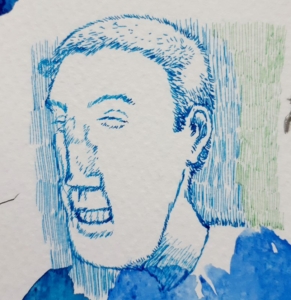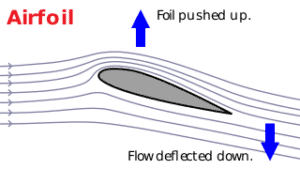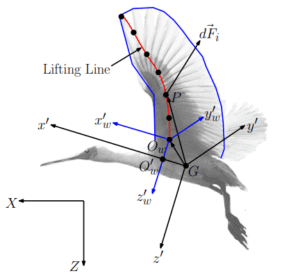Phorography?
photography = the process or art of producing images of objects on sensitized surfaces by the action of light or of other forms of radiant energy
phoro-: from Proto-Indo-European *bher = to carry, to move
-graphy: from PIE root *gerbh = “to scratch, carve” < graphein= “draw, write”
phoRography = the art of imagining and picturing from what moves or what is carried over, from what is relevant
PHOROrealism?
The problem with photography and photorealism

‘The Piazzetta, Venice, Looking North’ by Canaletto (ca. 01740)
Living beings don’t take in the world like a camera
The camera is in fact nothing but a “paralyzed cyclops” (D. Hockney), capturing reflected light in the fraction of a second (in general) coming through a lens. Linear perspective and photography have been on the rise since the 15th century and have gradually crept into our collective consciousness, making us believe that the photo is the most “realistic” or “natural” view or representation.
This is hugely problematic. A photo only shows the reflected light off a subject from a single viewpoint and it is only one way of looking at things. Collage allows ways to go further with snapshots, but the potential is fairly limited.
The many hours of people looking at screens makes the situation even worse: we no longer realize the difference between looking with the whole body, moving, moving the eyes, etc. and looking at a processed image on a screen or paper. Most think it is only a difference in resolution, but it isn’t!
Phorography?

In short, phoRography is the creation of pictures by means of any force or energy that carries meaning (in)forming those pictures, both mental and physical. This includes imaginative energies.
Generally, multiple perspectives are included in the same depiction, as in Cubism.
The importance of phororealism
Depicting more than meets the immediate eye can be a huge enrichment to our culture that is so photograph-centered, potentially giving more insight into nature and the world.
Cameras create distance; without cameras there is more proximity, connection and involvement.
Phorography & photography are two forms of "aspect realism"
Any art form that aspires to depict reality is a type of “aspect realism”, i.e. certain aspects are brought to the forefront to emulate reality or the experience of life and the world more generally.
Supposing that the world is infinitely rich, it is a prerequisite to “choose” certain aspects. By defining the choice of light reflected on surfaces as the only “real” realism because it can be generated by means of an external “objective”(?) machine is short-sighted.
Related concept: phoronomy/phoronometry
In physics, the concept of phoronometry is a well-known principle, better known as kinematics.
For example, in aviation, the phoronomic force is what keeps a plane in the air, by means of the movement and the shape and angle of its wings (!)


Interestingly, the concept has also been picked up again by Basil Hiley in his ontological interpretation of quantum physics.
Frequently Asked Questions
Why are you attacking photography?
Photography definitely has its place, and we love it even.
However, the photographic/linear perspective cannot and should not be the be-all and end-all when it comes to our understanding of ourselves and the world.
Isn’t any drawing or handmade picture by definition phorographic?
Quite right, yes.
We think it is very useful to bring awareness to the existence of non-photographic forms of visualization.
Furthermore, there are degrees to the “phorographicness” of an image. For example, a photorealist or hyperrealistic image has little phorographic qualities.


